LOCOMOTION AND MOVEMENT
Movement:- Significant feature of living beings
Locomotion:- Voluntary movements resulting in change in place/location.
Locomotion and movement is performed by organisms for variable reasons, e.g. Their habitat
Demand of situation like search of food, mate, breeding ground, escape from enemies/predators.
TYPES OF MOVEMENT/LOCOMOTION
Types Structure Examples and functions
Amoeboid Pseudopodia Leucocytes, macrophages,
involve microfilaments Amoeba
and streaming of protoplasm
Ciliary Cilia Removing dust particles from trachea.
Passage of ova through female reproductive track
Flagellar Flagella Maintenance of water current in canal system of sponges.
Locomotion in Euglena. Swimming of spermatozoa
Muscular Muscles Movement of limbs, jaws, tongue
Running walking, climbing flying
Note:-
- All locomotions are movements are not locomotion.
- In paramoecium- Cilia help in movement of food through cytopharynx and in locomotion as well.
- Tentacles are used for capturing of prey & also for locomotion.
- Locomotion requires a perfect coordinated activity of muscular, skeleton and neural systems.
MUSCLES
- Muscle tissue:– Mesodermal origin
- 40-50% of body weight of a human adult is contributed by muscles.
- Properties Excitability Contractility Extensibility Elasticity
- Many cardiac muscle cells assemble in branching pattern to form a cardiac muscle.
Classification of muscles:-
Basic Location Appearance Regulation Example
1. Skeleton Striated Voluntary Muscles of limbs
2. Visceral Non-striated/ Involuntary Inner walls of
smooth visceral organs
3. Cardiac Striated Involuntary Muscles of heart
SKELETAL MUSCLE FIBRES & ITS TYPES
- Skeletal muscles are closely associated with the skeletal components of the body.
Skeletal muscle
↓Many
Muscle fibre bundles/
Fascicles
↓Held by
Fascia (collagenous connective tissue)
Types
Red White
Myoglobin ↑ ↓
Mitochondria ↑ ↓
SR ↓ ↑
Respiration Mainly Mainly
aerobic anaerobic
Notes:-
Each muscle fibre have many parallelly arranged myofibrils / myofilamentss.
Muscle fibre:- Anatomical unit of muscle
Skeletal muscles are primarily involved in locomotion and change in body posture.
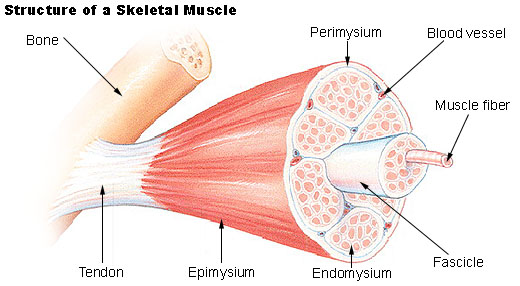
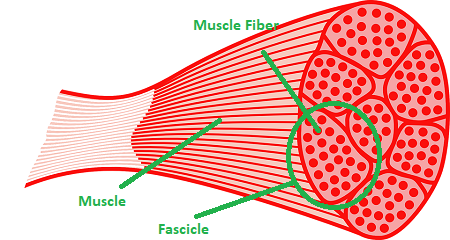
MYOFILAMENTS AND STRUCTURE OF CONTRACTILE PROTEINS
Each myofibril has dark and light bands due to actin and myosin distribution that establish striated appearance.
Light/l-band
Filament – (i) Thin/actin
Held by – (i) Z-line (bisect l-band)
Protein – (i) Actin (contractile) , (ii)Tropomyosin (iii) Troponin
Monomer -(i) Globular G’-chain (ii) Nil (iii) 3
Polymer -(i) Filamentous (ii) Nil
Typical – (i) F- actin arranged (ii) Tropomyosin run close to F-actin through
its length (iii) Troponin distributed at regular intervals on tropomyosin (iv) Mask active binding sites for myosin on actin filaments.
Dark A- band
Filament- Thick
Held by- M-line (thin fibrous membrane)
Protein- Myosin (contractile)
Monomer- Meromyosin(MM)
Polymer- HMM-Head, (Heavy)-Short arm- Project outward at regular
LMM- Tail (Light) distance and angle from each other from the surface of polymerised myosin filament and is known as cross arm.
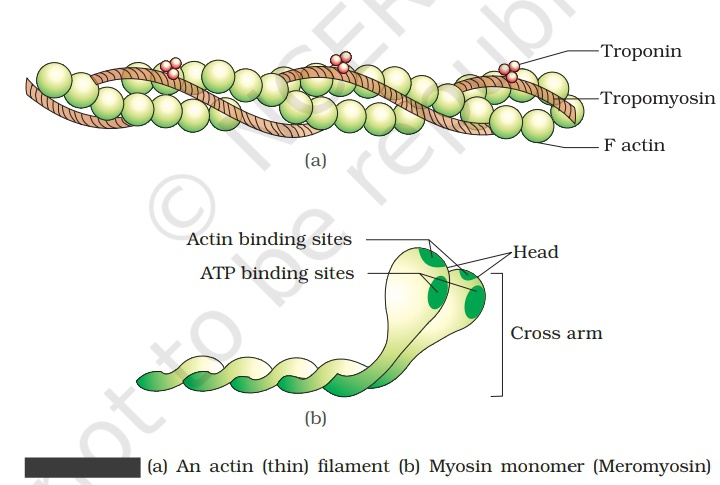
MECHANISM OF MUSCLE CONTRACTION/SLIDING FILAMENT THEORY
- Contraction of muscle fibre takes place by the sliding of the thin filaments over the thick filaments.
A motor neuron alongwith the muscle fibres connected to it constituent a motor unit.
CNS↔via↔Motor neuron↔Release→↓
Neurotransmitter Acetylcholine
↓
At Neuromuscular Junction/ Motor end plate, action potential is generated in sarcolemma that cause release of Ca+2 in sarcoplasm from SR leading to Ca+2 Increase insarcoplasm
↓
Ca+2 binds to troponin subunit, change in its confirmation, unmask active site for myosin binding on actin filament.
↓
Energised myosin (Myosin-ADP + Pi) binds to actin
↓
Crossbridge= Actin-myosin-ADP+ Pi
Result
Shortening/ -Pull thin filaments towards centre
contraction -Pull Z-line
of sarcomere -Length of l-band reduced
-Length of A-band retained.
↓
ADP+ Pi released from myosin head
↓
Cross bridge broken
↓
ATP hydrolysis on myosis head
↓
Cycle repeats
↓
Process will continue till Ca+2 pumped
back to sarcoplasmic cisternae
↓
Z-line return to original position
– Reaction time of fibres vary in different muscles.
– repeated activity of muscle leads to accumulation of lactic acid due to anaerobic breakdown of glycogen in them causing fatigue.
– Globular head is active ATP enzyme and has binding sites for ATP and active sites for actin.
– Thin filaments make l /isotropic- Arranged alternately throughout the
band-actin. Thick filaments make- length of myofibrils parallel to each other
A/Anisotropic band-actin+myosin- and to longitudinal axis of myofibrils.
– Sarcomere:- Functional unit of contraction between 2 ‘Z’ lines (elastic fibres) = 1 A-band + 2 half l-band
– H-zone is non overlapped part of thick filament by thin filaments.
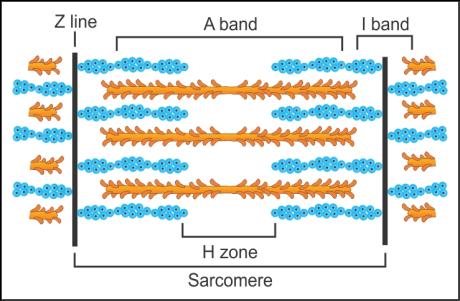
SKELETAL SYSTEM
- This system has significant role in movement shown by the body.
- Framework of 206 bones & few cartilages .
- Principle division -Appendicular skeleton -Axial skeleton.
Axial skeleton (Bones-80)
Bones distributed along main axis
Structure Bones No Name of bones Typical feature/basic Included function
Skull Cranium 8 1-Frontal – Protect brain
2- Parietal -Articulates with
2- Temporal superior region
1- Occipital of vertebral column by
1- Ethmoid 2 occipital condyles
1- Sphenoid (Dicondytic skull)
Facial 14 2-Nasal -Form front part
1- Mandible of skull
2- Lacrimal
2- Maxilla
2- Zygomatic
5- Others
Hyoid 1 1- U-shaped -Present at the base
of buccal cavity.
Ear ossicles 6 2- Malleus – Present in the
2- Incus middle ear.
2- Stapes
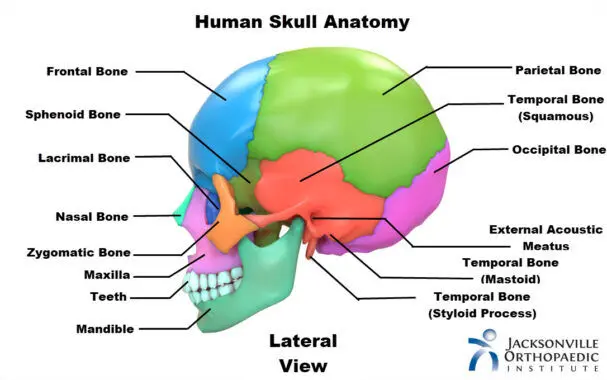
Structure Bones No Names of Typical features or
Included bones basic function
VERTEBRAL Dorsal 26 7- Cervical – Main framework of
COLUMN vertebrae 12- Thoracic trunk.
(serially) 5- Lumber -Protect spinal cord
arranged 1- Sacral-Fused – Supports head
units) 1- Coccygeal-Fused -point of
attachment of ribs and muscles
of back
Notes:-
-1 st vertebra atlas that articulates with occipital condyles.
-Seven cervical vertebrae exist in almost all mammals.
-Neural canal of vertebrae – site from where spinal cord passes.
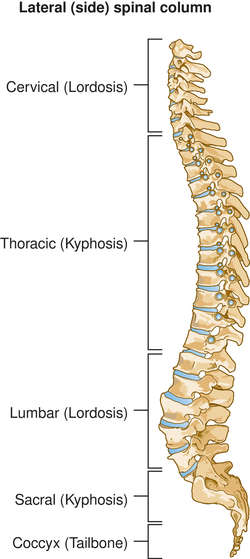
Structure Bones No Name of bones Typical feature/basic Included function
Sternum Chest bone 1 1- Flat bone -On ventral, midline of thorax
Ribs True ribs 24 14 -Vertebrostermal -Attach dorsally to
vertebrae and ventrally to sternum with hyaline cartiage
False-ribs 6- vertebrochpdral – Not directly attached to sternum but to 7th rib with hyaline cartilage (8th to 10th pair)
Floating ribs 4- Vertebral -Not connected ventrally
(11th – 12th pair)
-All ribs are bicephalic thin flat bones
i.e. they have 2 articulating ends on dorsal side
-Vertebral column+ Stenum+ Ribs= Rib cage
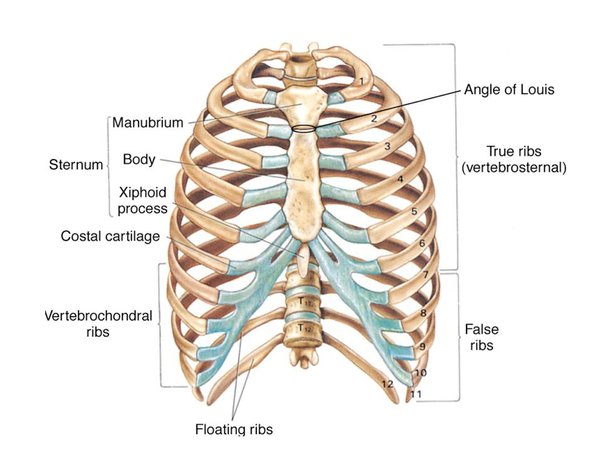
APPENDICULAR SKELETON
(BONES-126)
- Consists of bones of limbs (30 x 4 = 120) and girdles (6)
|_________________________________________________|
Pectoral girdle & upper arm Pelvic girdle & lower arm
Notes:-
-Girdles helps in the articulation of limbs with axial skeleton
– Scapula, a dorsal triangular flat bone, have elevated ridge/spine, expanded to form acromion process that articulates with clavicle.
– Glenoid cavity in scapula articulates with humerus head to form shoulder joint
– Acetabulum, formed by fusion of ilium, ischium and pubis, articulates with femur ti form hip joint
– 2 halves of pelvic girdle meet ventrally to form Pubic symphysis containing fibrous cartilage
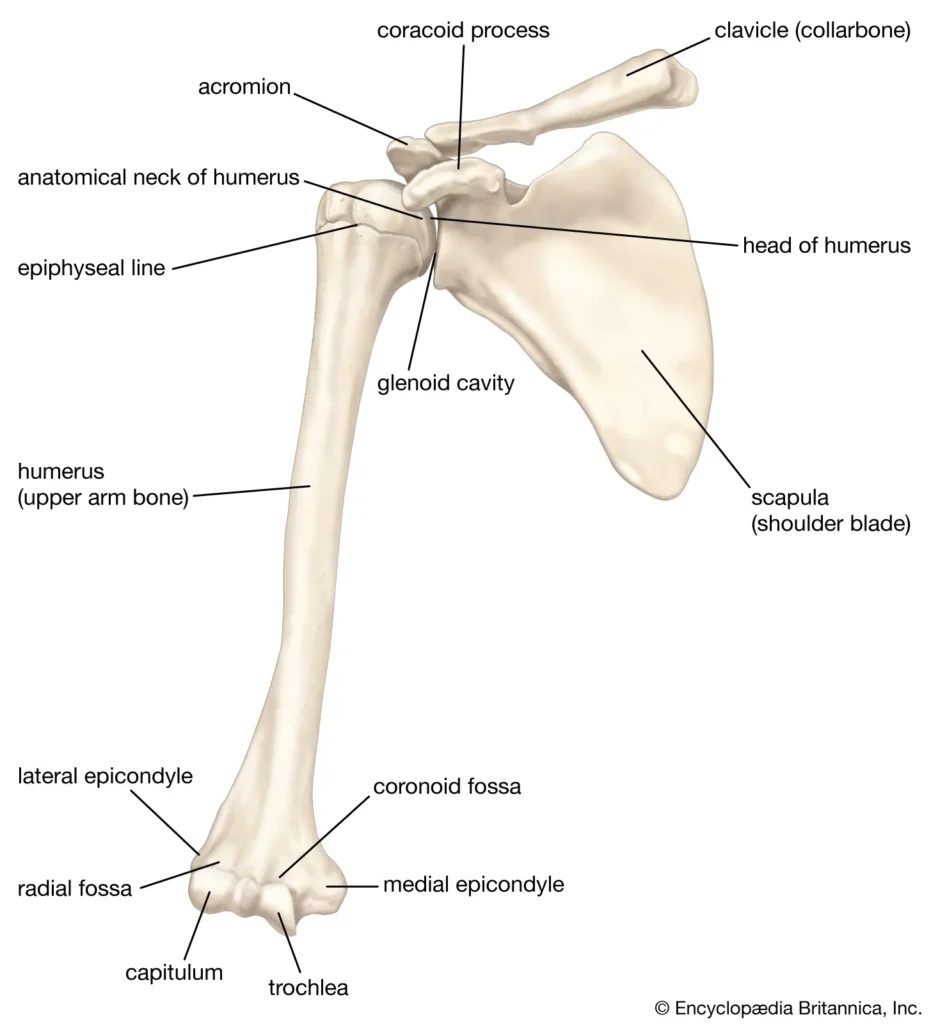
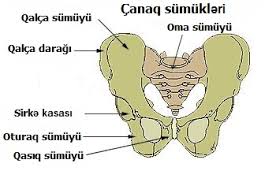
JOINTS
-They are essential for all types of movements involving body parts of the body.
– Point of contact between bones or bones and cartilages.
– Force generated by muscle is used to carry out movement through joint, where joint acts as fulcrum.
– Types of joints (Basic-Major structural forms)
Types Bones joined by Movement Examples
Fibrous Dense fibrous Do not allow Flat skull bones fused end
connective tissue any movement to end vie sutures to form
cranium.
Cartilaginous -Fibrous Limited Adjacent vertebrae
cartilage movement
Synovial Fluid filled Considerable -Humerus & pectoral
synovial movement, helps girdle (ball and socket
cavity between in locomotion joint).
2 bones and many other -Knee joint (Hinge joint)
movements Atlas & axis (Pivot joint)
Between carpals
(Gliding joint)
Carpal & metacarpal of thumb (Saddle joint)
DISORDERS
Disease Causes Impact
Myasthenia gravis Autoimmunity – Affects neuromuscular junction
– Fatigue, weakening and
paralysis of skeletal muscles
Muscular dystrophy Genetic – Progressive degeneration
of skeletal muscles
Tetany Low Ca+2 in body – Rapid spasms in muscle
fluid (wild contractions)
Arthritis – Inflammation of joints
Gout Accumulation of – Inflammation of joints
uric acid crystals
Osteoporosis Age related – Decreased bone mass,
Decreased levels Increased chances of
of estrogen fracture.
FUNFACTS
Muscle Efficiency: Human muscles are incredibly efficient. They convert about 25% of the energy released in the breakdown of food into useful work, making them more efficient than internal combustion engines in cars.
Speedy Reflexes: The fastest reflexes in the human body occur in the spinal cord, allowing for rapid responses to stimuli. For example, the withdrawal reflex, such as pulling your hand away from a hot surface, can occur in as little as 30 milliseconds.
Efficient Walkers: Humans are highly efficient walkers. Walking at a steady pace of about 3-4 miles per hour (5-6 kilometers per hour) is the most energy-efficient way for humans to travel over long distances.
Bird Migration: Some bird species undertake incredible migratory journeys each year. For example, the Arctic tern migrates from its breeding grounds in the Arctic to its wintering grounds in the Antarctic, covering a round-trip distance of over 70,900 miles (114,500 kilometers).
Snake Movement: Snakes can move in a variety of ways, including serpentine (side-to-side), rectilinear (straight-line), lateral undulation (side-to-side wave motion), and concertina (alternating gripping and pushing movements).
Feline Agility: Cats are incredibly agile and flexible animals. They have a flexible spine, retractable claws, and powerful leg muscles, allowing them to jump several times their own body length and twist their bodies in mid-air to land on their feet.
Whale Tail Power: The tail fluke of a whale is one of the most powerful muscles in the animal kingdom. It generates immense propulsion, allowing whales to swim at speeds of up to 30 miles per hour (48 kilometers per hour).
Spider Silk Strength: Spider silk is one of the strongest materials in the world, with some varieties being stronger than steel of the same diameter. It is also incredibly elastic, able to stretch up to five times its original length without breaking.
Ant Navigation: Ants are excellent navigators. They use a combination of visual cues, landmarks, and pheromone trails to find their way back to their nest, even when traveling long distances for foraging.
Bipedalism in Humans: Bipedalism, the ability to walk on two legs, is a defining characteristic of humans. It is thought to have evolved over 4 million years ago, allowing our early ancestors to travel long distances and access new food sources.
Locomotion refers to the ability of animals to move from one place to another. It involves the coordination of muscles, bones, and nervous system structures to produce movement.
Land-dwelling animals use a variety of methods for locomotion, including walking (using legs or limbs), running (moving rapidly on legs or feet), crawling (using body and limb movement), hopping (using powerful leg muscles for jumping), and burrowing (digging through soil or substrate).
Animals can use various methods of locomotion, including walking, running, crawling, swimming, flying, hopping, slithering, and jumping. The type of locomotion used depends on factors such as the animal’s anatomy, environment, and evolutionary adaptations.
Aquatic animals have evolved specialized adaptations for swimming, including streamlined body shapes, fins, flippers, and tails for propulsion, buoyancy control mechanisms (such as swim bladders), and efficient respiratory systems for extracting oxygen from water.
The skeleton provides structural support and serves as an anchor for muscles, allowing animals to move. Different types of skeletons, such as endoskeletons (internal bones), exoskeletons (external shells), and hydrostatic skeletons (fluid-filled cavities), facilitate movement in different animal groups.